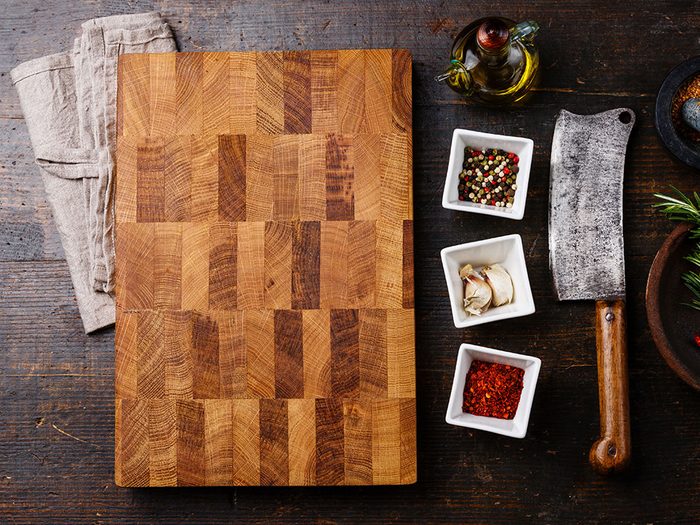
Bleach Uses Beyond the Laundry Room
Use bleach to clean butcher’s block
Don’t even think about using furniture polish or any other household cleaner to clean a butcher block cutting board or countertop. Instead, scrub the surface with a brush dipped in a solution of 1 teaspoon (5 millilitres) bleach diluted in 2 litres water. Scrub in small circles, and be careful not to saturate the wood. Wipe with a slightly damp paper towel, then immediately buff dry with a clean cloth.
Read on for more brilliant bleach uses!
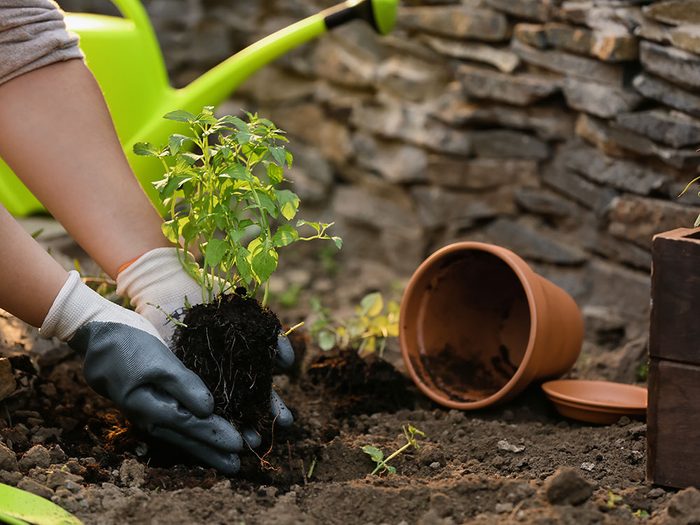
Bleach uses in the garden
Bleach uses extend to cleaning flower pots and planters. “By cleaning your containers it helps prevent the transfer of molds and diseases from old plants to new ones,” says Julia Byrne, a bleach product developer at Clorox. To disinfect, wash and rinse pots and planters by soaking them in a solution of half a cup of bleach (125 millilitres) to one gallon (3.75 litres) of water for at least five minutes before rinsing with water.
Check out more genius gardening tips that will save you time and money.
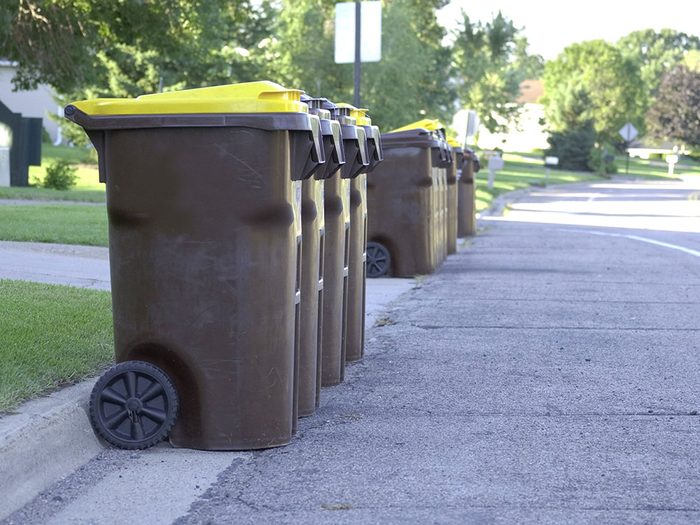
Freshen up your garbage cans with bleach
Although garbage cans are designed to hold your trash, the cans themselves need a good clean with bleach every once in a while. Wash with soapy water and rinse. Then deodorize and sanitize the cans with a mixture of half a cup (125 millilitres) of bleach per three-quarters of a gallon (3 litres) of water. Swish this solution over the inside of the can and let it sit for two minutes before rinsing.
Here’s why you should drill holes in your garbage can.
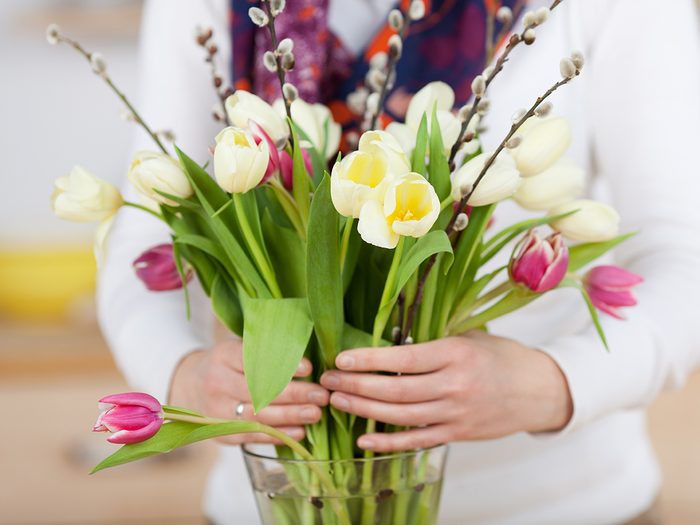
Keep fresh cut flowers alive
If you don’t have a green thumb, you can use bleach to keep fresh cut flowers alive. Re-cut the stems on a diagonal, then keep them in cold water with a quarter teaspoon (1.25 millilitres) of bleach per quart (litre) of water, according to Byrne.
Psst—you’ll find a clever variation of this hack in our roundup of uses for plastic wrap!
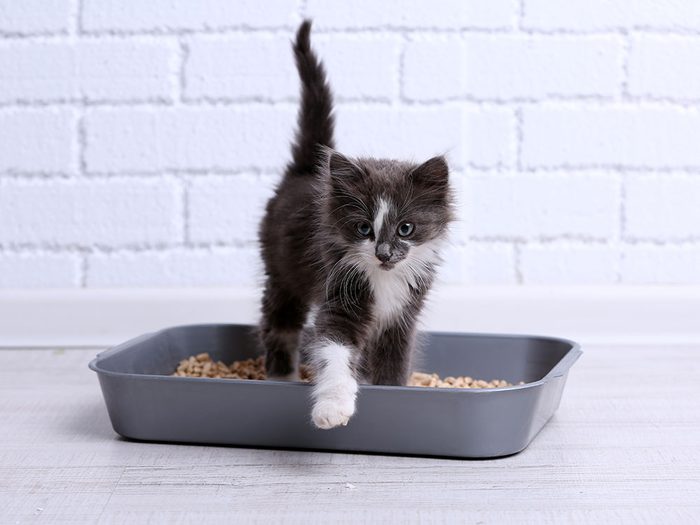
Eliminate litter box odour
Put an end to unpleasant cat box odours with bleach, which kills odour-causing germs. Wash the litter box with sudsy water and rinse. Then, Byrne recommends wiping it down with a solution of half a cup (125 millilitres) of bleach to one gallon (3.75 litres) of water. Wait five minutes before rinsing.
Find out the most common mistakes cat owners make.
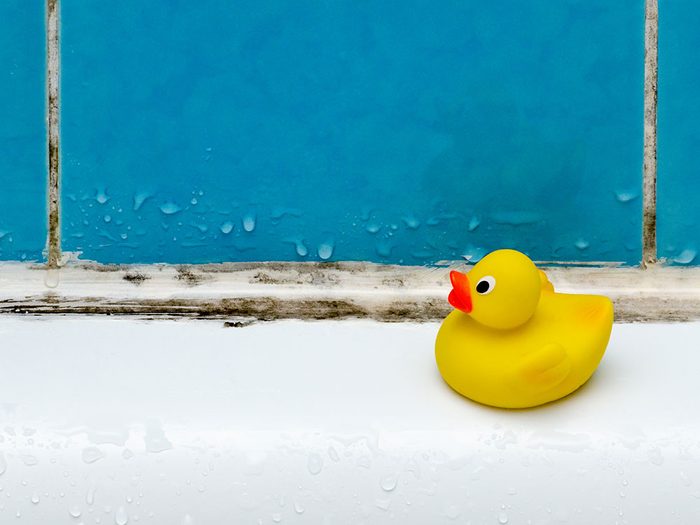
Clean off mold and mildew with bleach
Bleach not only removes mold and mildew stains, but also kills the fungus, says Byrne. “By killing the fungus, you no longer have to worry about the harmful effects that mold can have to your family’s health,” she says. Remove mold and mildew from your bathroom tiles with a mixture of equal parts bleach and water in a spray bottle. Let it sit for 15 minutes before scrubbing it off and rinsing.
Check out more bathroom cleaning tips from the pros.
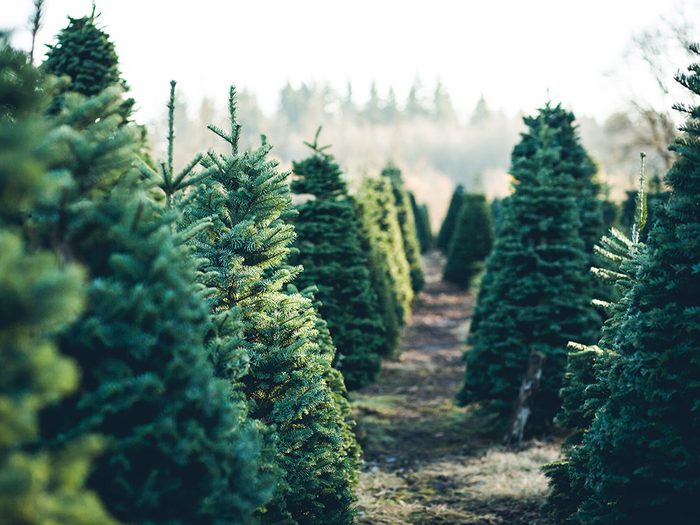
Use bleach to keep your Christmas tree alive longer
Keep the holiday spirit around just a bit longer with the help of bleach. According Byrne, you can prolong the life of your freshly cut tree with an easy mixture. Use a solution of two teaspoons (10 millilitres) of bleach per half a gallon (2 litres) of hot water, plus one cup (250 millilitres) of corn syrup, and an eighth of a cup (30 millilitres) of powdered iron from your local nursery. This mixture goes into your tree stand bowl instead of plain water, Byrne says.
Did you know bleach has an expiration date?
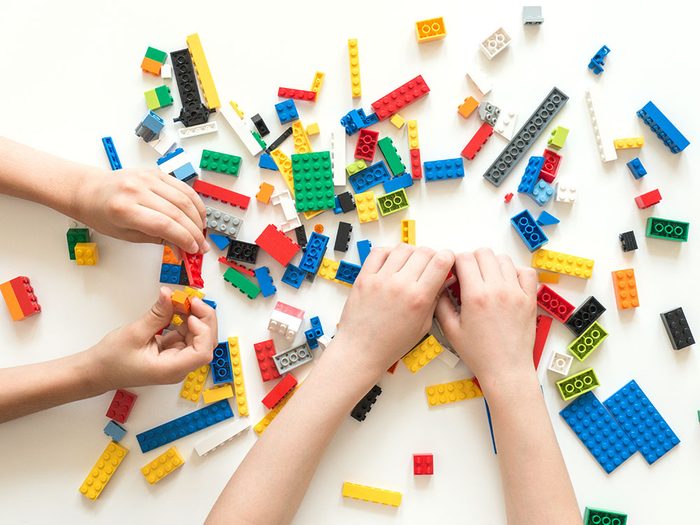
Use bleach to clean toys
Plastic building blocks and other hard, non-porous objects such as kids toys could definitely benefit from bleach, especially if they are second-hand. “Bleach is perfect for disinfecting second-hand products because you can disinfect a lot of items with a small amount of bleach at a time,” Byrne says. Here’s what to do: add half a cup (125 millilitres) of bleach per gallon (3.75 litres) of water. Then wipe the surface with the bleach solution and let it sit on the surface for at least five minutes. Rinse it well with water and let it air dry.
Check out more spring cleaning tips that make disinfecting a total breeze.
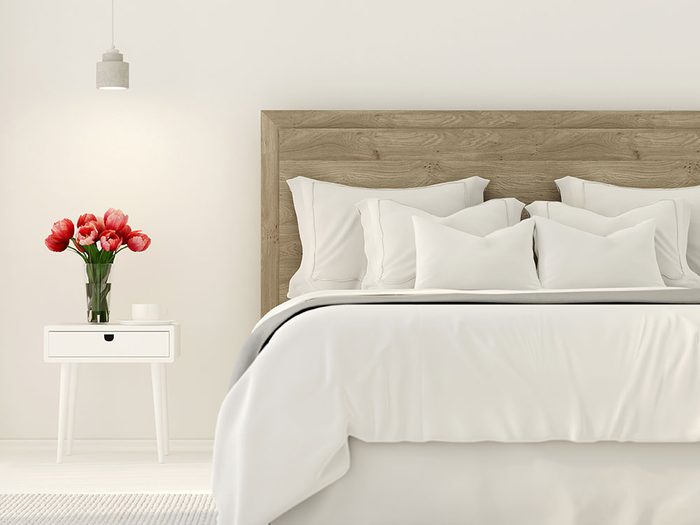
Brighten and clean second-hand white linens
Got your hands on some gently-used, high thread count white bedding? To sanitize and brighten them before their first use, add two-thirds of a cup (150 millilitres) of bleach to your standard machine or one-third (75 millilitres) of a cup of bleach to your high-efficiency machine along with regular detergent. Ensure that the bleach contacts the clothes for ten minutes, Byrne says.
These brilliant laundry hacks make cleaning your clothes less of a chore.
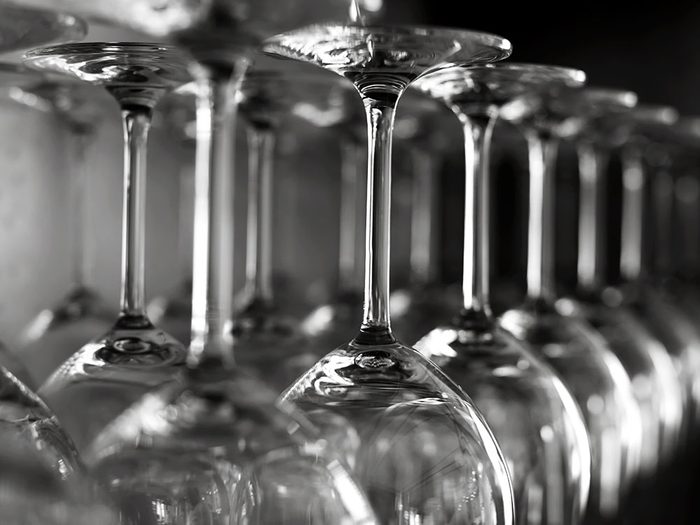
Use bleach to brighten up glass dishware
Put the sparkle back in your glasses and dishes by adding a teaspoon (5 millilitres) of bleach to your soapy dishwasher as you’re washing your glassware. Be sure to rinse well, and dry with a soft towel.
Here’s what it means if you see white streaks on your dishes.
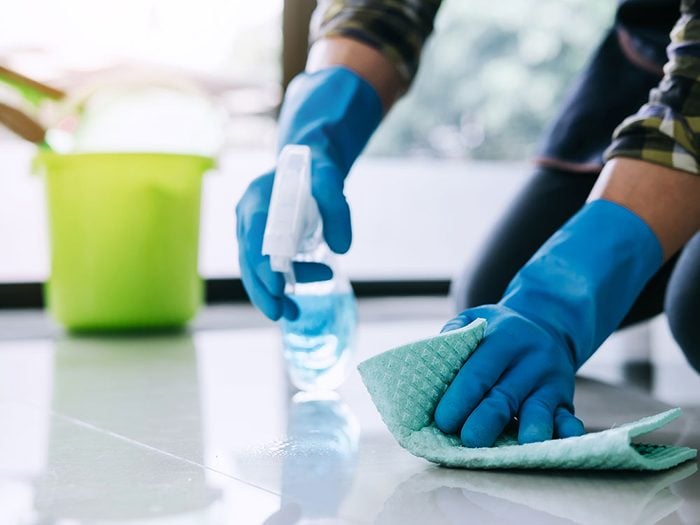
Make a DIY spray to use on most surfaces
Sealed tile, wood, countertops and plastic are all hard, non-porous surfaces that are safe for bleach. Create your own disinfecting spray with a combination of two cups (500 millilitres) of water and one tablespoon (15 millilitres) of bleach. Plus, bleach is good for cleaning glass and porcelain dishware because it doesn’t streak as much as some other cleaners, according to Byrne.
Here are 10 cleaning myths you need to stop believing.
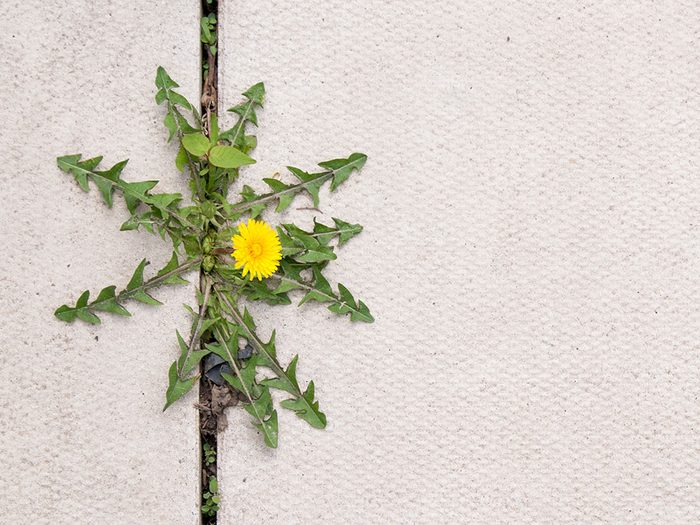
Use bleach to kill weeds
Do weeds seem to thrive in the cracks and crevices of your walkways? Try pouring a bit of undiluted bleach over them. After a day or two, you can simply pull them out, and the bleach will keep them from coming back. Just be careful not to get bleach on the grass or plantings bordering the walkway.
Find out 18 things you should never do to your lawn.
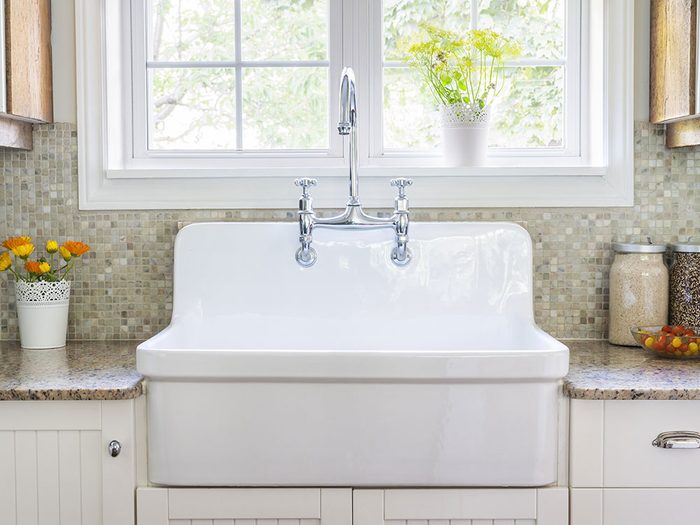
Use bleach to make white porcelain shine
Want to get your white porcelain sink, candleholder or pottery looking as good as new? In a well-ventilated area on a work surface protected by heavy plastic, place several paper towels over the item (or across the bottom of the sink) and carefully saturate them with undiluted bleach. Let soak for 15 minutes to a half hour, then rinse and wipe dry with a clean towel. Note: Do not try this with antiques; you can diminish their value or cause damage. And never use bleach on coloured porcelain, because the colour will fade.
Here’s how to clean absolutely everything in your kitchen, according to Charles the Butler of CTV’s The Marilyn Denis Show.
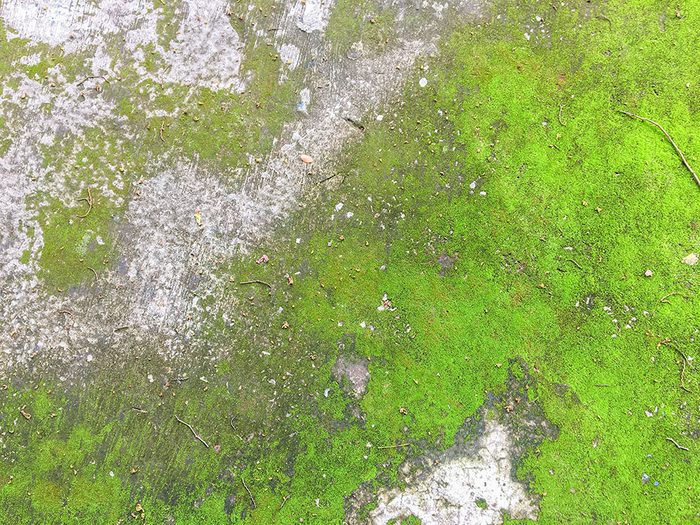
Use bleach to get rid of moss and algae
To remove slippery and unsightly moss and algae on your brick, concrete, or stone walkways, scrub them with a solution of three-quarters of a cup (175 millilitres) of bleach in 1 gallon (3.75 litres) water. Be careful not to get bleach on your ornamental plants or grass.
Don’t miss this expert advice on how to get rid of crabgrass.
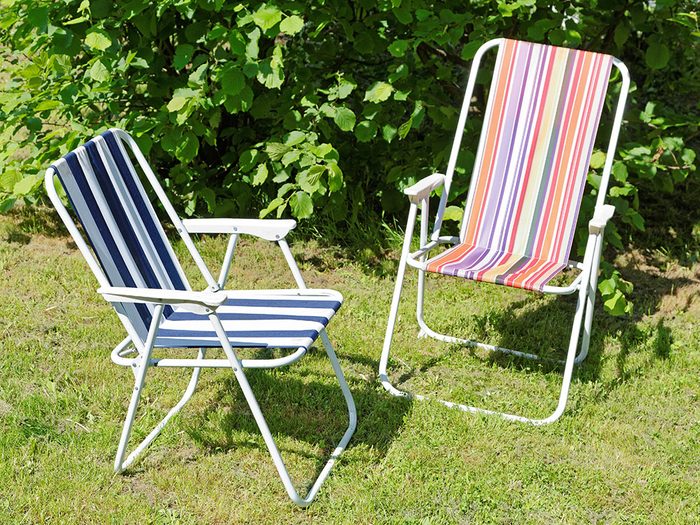
Clean plastic lawn furniture
Is your plastic-mesh lawn furniture looking dingy? Before you place it curbside, try washing it with some mild detergent mixed with one-half of a cup (125 millilitres) of bleach in 1 gallon (3.75 litres) water. Rinse it clean, then air-dry.
Now that you’ve got these clever bleach uses under your belt, discover 20 amazing new uses for ammonia.